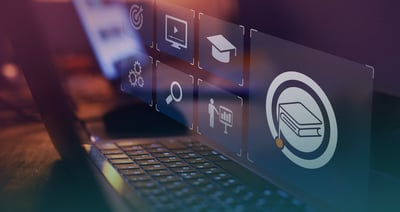Before libraries were locked down during the first wave of COVID-19 closures this year, universities were at different stages of readiness to move all instruction to an online environment and had widely varying expectations from their libraries. A recent Library Journal webinar gave a variety of academic libraries an opportunity to share their experiences with distance learning.
When closures rippled across the United States, Drexel already offered 97% of courses in an online environment and the library was involved in serving both online and on-campus users. The State University of New York (SUNY) campuses were benefiting from library initiatives, like the open educational resources implemented in 2019. And University of North Carolina (UNC) at Chapel Hill was in the early stages of adopting a campus-wide learning management system.
While many universities were offering online courses to some degree before the pandemic, academic libraries have been called on to bridge many gaps in the harried transition to remote instruction. Rural UNC students struggled for internet connectivity, and SUNY classes that relied on physical course reserves struggled to quickly shift to other resources. From coordinating laptop distribution programs to training faculty on video conferencing systems that could handle the network load of undergraduate courses, libraries have helped mitigate the impacts of this crisis on their campus communities.
Many libraries were able to turn to their existing crisis management plans, such as in regions with regular periods of natural disaster or short-term emergencies. For example, members of the Florida Academic Library Services Cooperative leveraged their hurricane plans during coronavirus closures. In many ways, because of this preparedness, the 28 public and 12 private institutions in the FALSC consortia were able to pivot to fully online courses without any disruption.
While these contingencies have proven successful for shorter periods of time, institutions in the SUNY system are finding that long-lasting distance learning support is more challenging, both logistically and technologically. Libraries can draw on lessons from past emergencies, but new concerns surface as we consider pivoting contingency plans to the new normal. Times Higher Education recently noted evidence that distance learning exacerbates existing social inequities, in particular in regard to income and ethnicity.
The SUNY libraries have witnessed this firsthand, where many of their students do not have adequate internet access to attend classes online, especially those in rural areas. Ensuring adequate network capacity is key for scaling distance learning, and UNC libraries have collaborated with their IT departments to run university systems through the paces to ensure continuity of service. Even with stellar online connectivity, libraries must also be sure all digital resources have all-campus remote access privileges. For example, eBook copyright and license terms can vary and create mountains of compliance work for librarians in order to retain access.
These challenges, coupled with the isolation of remote working, have caused university library staff a great deal of stress. Administrators must look out for stress management and emotional impacts of the disruption on teachers, students, and librarians alike. Libraries like Drexel’s are encouraging their staff to seek out physically distanced options for brainstorming, professional development, and stress relief.
Fostering resiliency among members of academic communities is a common sentiment coming from libraries this year. Turning these quick-fix solutions into sustainable programs is a challenge facing all types of libraries. As the OCLC Research Library Partnership group mentioned this spring, “we need to re-examine these pandemic-era workflows, and how the library can help organize and optimize them.”
Academic libraries, like Drexel’s, are hard at work preparing for the new school year, running needs assessments across faculty and students, and preparing training sessions on their online learning platforms. Safeguarding stable internet connections and accessible digital resources are top priorities for many libraries, especially as the economic fallout of the pandemic begins to erode library budgets.
With an eye toward preparing for long-haul distance learning, academic libraries have road-tested solutions for ensuring continuity of services during on- or off-campus instruction. As the fall term begins for students across the country, many universities have primary and secondary plans for holding in-person, hybrid, and/or distance education. After the spring lockdowns, libraries are gearing up to meet the challenges and adapt to the realities of the '20-'21 school year, while keeping another eye out for what else this year has to offer.
Tag(s):
academic


